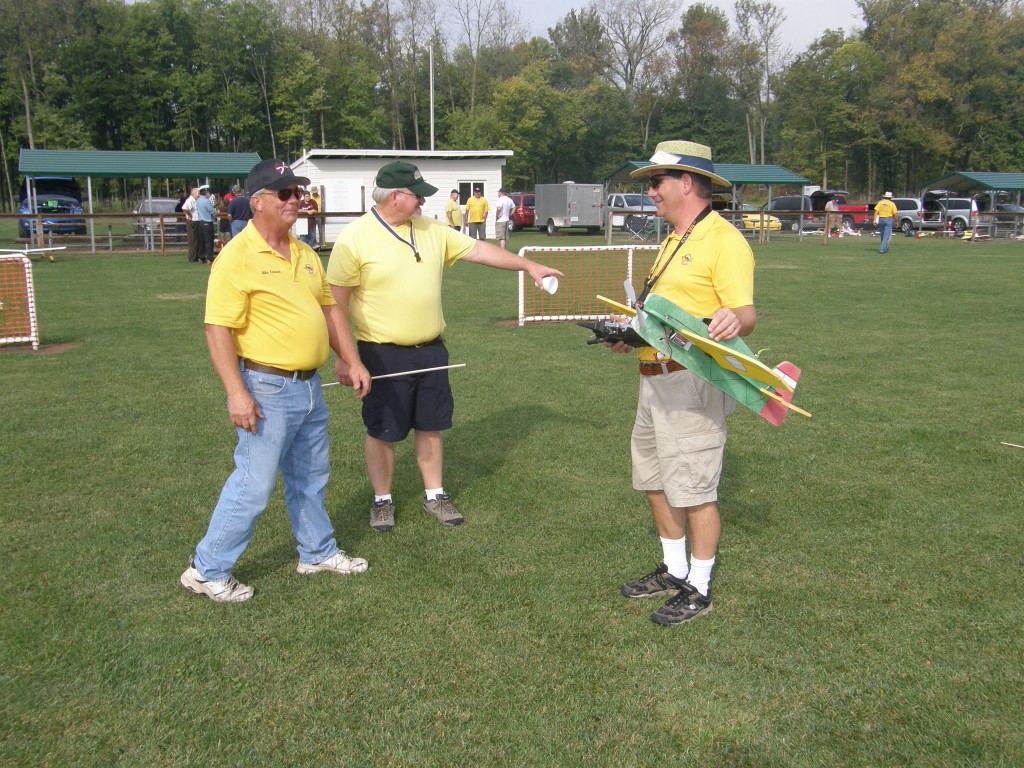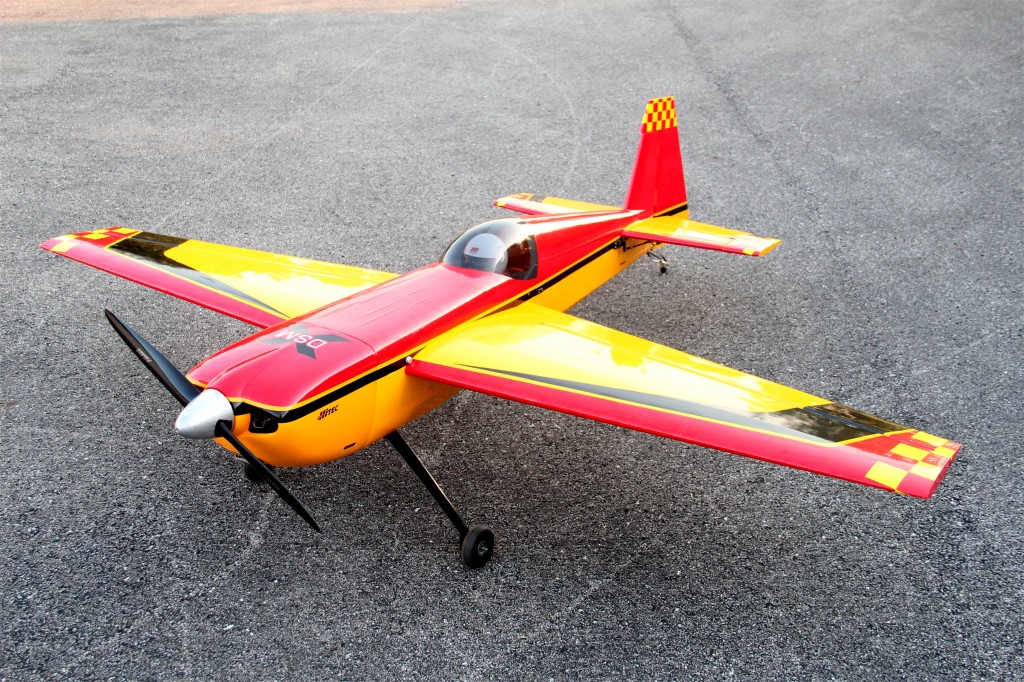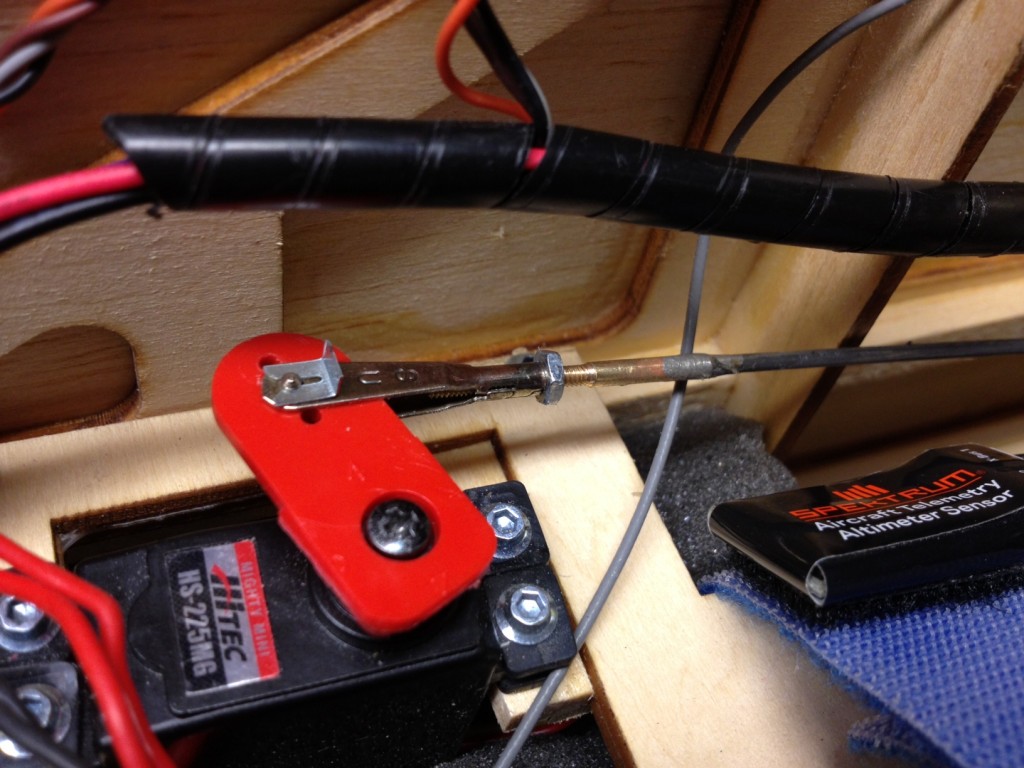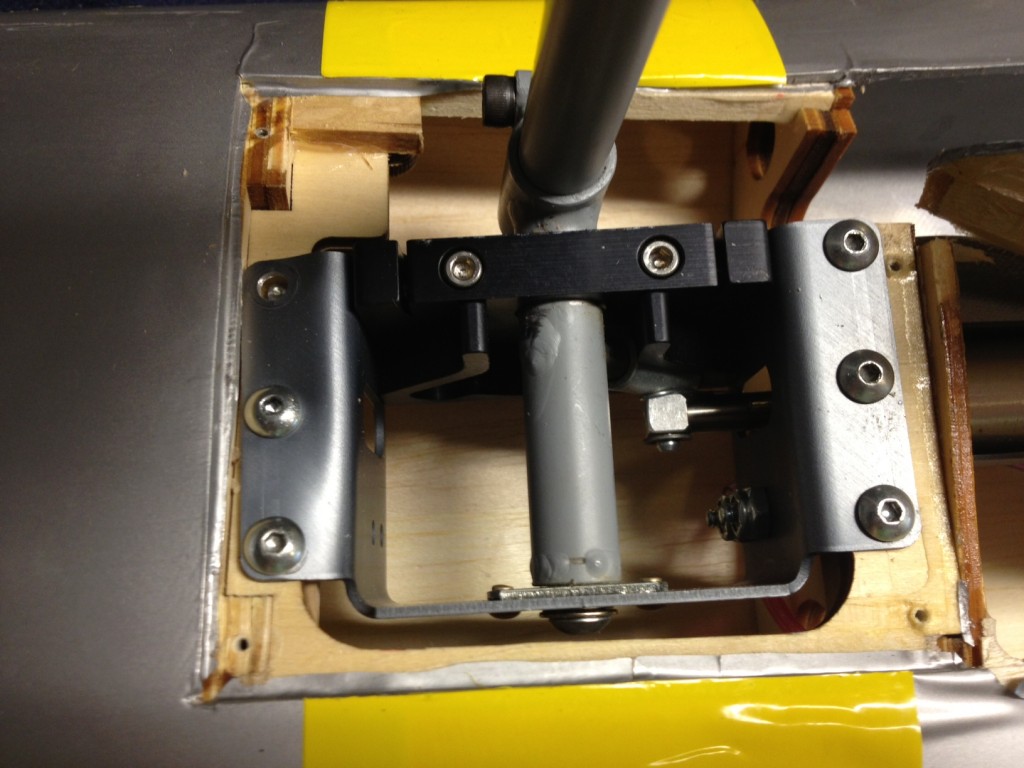October 5th at the Blue River airfield I participated in the Indianapolis City Wide fun fly competition. It was a nice morning with rain closing us down after a single round of competition but as usual the South Side club was out in force and flying to win. A second round wouldn’t have mattered to the outcome and with rain closing in we called it a day. Below, I am ready to start the competition flying my Freestyle foamy. (Pic by T. Brindle)
I’ve flown in the Citywide competition maybe half of the last 10 years. It’s a competition that consists of 4 “skills” including bomb drop, stick break, limbo and spot landing.
Bomb drop is done first by dropping a bomb (usually a washer or nut with a small piece of ribbon attached) into a set of concentric circles that are painted on the field. Points range from 50 for a center drop (about a 3 foot circle) to 5 for anywhere on the runway.
Usually this is followed by stick break. In this contest a 1/4″ balsa stick is placed in the ground and a styrofoam cup is placed on top. If you can take the cup off the top of the stick without touching the ground you score 50 points on the first attempt or 25 on the second try. The stick is usually 3′ tall but the hosting club can modify the rules to some extent.
Next up is a limbo. The contestant has a choice of 3,4 or 5 foot heights to try to pass under with 50 points for passing under the 3′, 40 for the 4′ height, etc… half points are given for a second try if the first fails but touching the ground during the pass nullifies any award for that skill.
Last is a simple spot landing. Using the same concentric rings as the bomb drop the pilot then lands with the first part to touch typically being the scored part of the landing. Touch and go is not allowed.
I scored a 135 with my foamy in slightly gusty conditions and was happy with that performance.
With only the south side club being in attendance consistently and in force over the last few years this event will likely see some changes or may just fade away if more interest can not be garnered next year.






